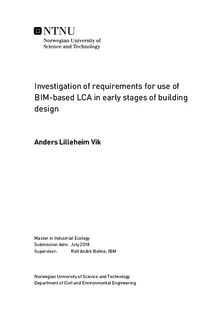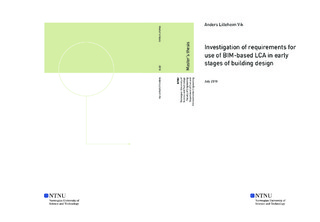| dc.description.abstract | The building sector is currently facing several challenges related to sustainability. It is responsible for substantial contributions to e.g. climate change, waste production, energy consumption and land use change, at the same time as global population and building floor area per person is increasing. Our obligation towards the 2ºC target from the Paris Agreement and the United Nations Sustainable Development Goals for 2030 requires that effective measures for reducing the environmental impact from buildings in Norway and globally are implemented swiftly. One potential response is to improve best-practice for construction of buildings by optimizing the environmental performance over the entire life cycle.
The utilization of life cycle assessment (LCA) have become the standard method for measuring the environmental impact of buildings over their life cycle. This methodology may be used to compare the environmental impact of different solutions, and promote the more sustainable alternative.
This thesis investigates the application of LCA during the design stages of a building, to enable comparison of the sustainability performance of different design alternatives. The time demanding task of compiling life cycle data for such a LCA might be reduced significantly by extracting material quantities from virtual building models made with building information modeling (BIM). This thesis is a step towards identifying the requirements for meaningful use of such a methodology, as well as determining the feasibility of each requirement.
The results indicate that it is theoretically feasible to automate a whole-building LCA process by integrating environmental databases and LCA tools into BIM software. The technological maturity is probably not sufficient yet for such a symbiosis, but could be achievable if software developers are encouraged to develop more complex and interactive solutions. It is likely that this methodology can be applied to the early design phase of buildings, with or without automation, and guide building designers towards some reductions in life cycle impact. The potential environmental improvement potential from utilizing this method is limited to gains from choice of materials, quantity of materials and use phase emissions. The method can not be used to improve the sustainability of materials or energy production, nor improve user behaviour.
More research is needed to decide whether it is practically feasible to use BIM-based LCA during building design. The potential benefits from using this method compared to other methods should be quantified. They are expected to be low compared to best-practice in building sustainability, but it might give substantial gains for complex building projects or designer with limited knowledge about building sustainability. When the potential benefits are known, they must be weighed against the cost to determine whether the utilization of BIM-based LCA during early design phases is desirable. | |

